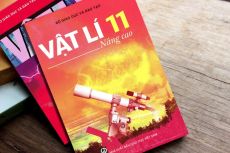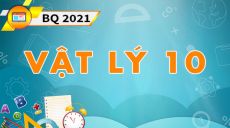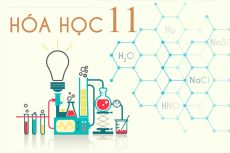Rewrite the sentence:
Only Mary scored high enough to pass this test
Suy nghĩ và trả lời câu hỏi trước khi xem đáp án
Lời giải:
Báo saiGiải thích:
Dịch: Chỉ có Mary đạt điểm cao đủ để vượt qua bài kiểm tra này.
= Mary là người duy nhất vượt qua bài kiểm tra này.
Câu hỏi liên quan
-
Read the following passage and choose the best answer (A, B, C, D):
Jupiter is the largest and most massive planet and is fifth in order of distance from the sun. It is well placed for observation for several months in every year and on average is the brightest of the planets apart from Venus, though for relatively brief periods Mars may outshine it. Jupiter’s less than 10 hour rotation period gives it the shortest day in the solar system in so far as the principal planets are concerned. There are no true seasons on Jupiter because the axial inclination to the perpendicular of the orbital plane is only just over 3°-less than that for any other planet. The most famous mark on Jupiter is the Great Red Spot. It has shown variations in both intensity and color, and at times it has been invisible, but it always returns after a few years. At its greatest extent it may be 40,000 kilometers long and 14,000 kilometers wide, so its surface area is greater than that of Earth. Though the latitude of the Red Spot varies little, it drifts about in longitude. Over the past century the total longitudinal drift has amounted to approximately 1200°. The latitude is generally very close to – 22°. It was once thought that the Red Spot might be a solid or semisolid body floating in Jupiter’s outer gas. However, the Pioneer and Voyager results have refuted that idea and proven the Red Spot to be a phenomenon of Jovian meteorology. Its longevity may well due to its exceptional size, but there are signs that it is decreasing in size, and it may not be permanent. Several smaller red spots have been seen occasionally but have not lasted.
3. According to the passage, the Great Red Spot________ -
Read the following passage and choose the best answer (A, B, C, D):
The term “generation gap” may have been coined not long ago but the problem itself is as old as the hills. All sorts of conflicts and misunderstanding between younger and older generations occur in probably every family. Adults complain about arrogance and insensitivity of young people whereas the latter claim that their parents have no idea about what they are going through. There seems to be no perfect solution to this problem as the young and the old find it difficult, if not impossible, to communicate and accept opposite views. The fact that teenagers develop different values from those held by their parents leads to numerous conflicts. There are many reasons why the problem of generation gap arises. First of all, the period of adolescence is difficult. Teenagers are not children any longer, but they are no adults yet. They search for a sense of identity and crave independence. On the other hand, they depend on their parents financially and still need their parent consent when they want to go out, go for holidays, buy something expensive, invite friends home, etc. Very often teenagers treat their parents like enemies especially when they are not permitted to do one thing or another. Obviously, it is understandable when parents insist a teenager returns home before midnight. They have a wide knowledge of the world and all kinds of risks involved – reckless youngsters see no danger in walking alone in the middle of the night or getting a lift from a stranger who might be a serial killer. When children grow up and start their own families they are able to admit that their parents were usually right, although a bit overprotective at times However, we must remember that adolescence is the period of making important decisions. Sixteen or seventeen-year-olds want to choose their career path or at least develop their talents, which in turn will enable them to decide upon a job later on. Secondly, it is in their late teens when they form their lifelong friendships, go for their first dates, analyze what qualities they will look for in their future partners. Unfortunately, a lot of parents do not want to accept the fact that their child is growing up and has the sole right to choose who she or he wants to become in the future. Such mothers and fathers often have their own idea what their child’s life should be. To my mind, this kind of behavior is really harmful and it can result in a very serious family conflict. Every now and then we meet forty-year-old people who accuse their parents of making them study the subject they hated or marrying the person they never loved. The generation gap problem, which usually disappears a few years later, in such families turns into an emotional wound which might never heal and the feeling of a wasted life on both parts. To sum up, although conflicts between teenagers and their parents are unavoidable, they definitely do not have to lead to an open war. My advice to parents is to try and treat teenagers as their equal partners and to accept their ideas. Teenagers should respect their mothers and fathers more, and be always ready to discuss serious problems with them. All in all, who else loves them more than their parents do?
3. The word “coined” in paragraph 1 is closest in meaning to ______ -
Each sentence has a mistake. Find it by chosing A B C or D
It is estimated that the population of Vietnam will reach 100 million for the next 25 years and will stabilize at 120 million by the middle of this century
-
Read the following passage and choose the best answer (A, B, C, D):
You’ll be able to purchase high-quality emotions online. Emotion-sharing experiences are the latest fad in 2045. Imagine your friend at Glastonbury can post a photo on Instagram and with it comes bundled a faint twinkling of what she was feeling right there in that moment, so you too can share emotionally in her social experience. Recently, techniques for direct brain stimulation, like opt genetics, have made it possible to not only read but also write information into single neurons. At the moment data transfer rates are still very slow, the best we can do is a few bits per second, but this could well increase to kilobits or maybe reach broadband speeds by 2045. This means the range of human perception could expand beyond its current design limitations. One could foresee a new and extraordinary world where there is a virtual marketplace for trading high quality emotions – where artists looking for a particularly high strength brew of melancholy, or actors needing to channel regret or compassion for their next play, could purchase emotions online. Our cities will be made from living, dynamic materials that respond to the environment. In 30 years, tall buildings made of glass and twisted steel will be seen as relics from a bygone era, in the same way we think now of 1970s concrete tower blocks: ugly, outdated and unfit for contemporary purpose. The urban environment of 2045 blends architecture with living materials that are mouldable, adaptable, responsive and disposable. Entirely new synthetic life forms, or biological machines, made of engineered living cells from bacteria, fungi and algae will grow and evolve with the changing needs of a building’s inhabitants. They breathe in pollutants, clean wastewater, and use sunlight to make useful chemicals, energy, heat and vibrant vertical gardens. We will start to see a convergence between biology and technology, to the point where there is no longer a perceptible difference between the two. Today, synthetic biology labs are looking at the full diversity of what nature has to offer and using this to mix, match and edit genomes to design synthetic life forms. Right now, this field is just getting started and the science of synthetic biology is going to be tougher than most will admit. We will use invisibility cloaks to “disappear” ugly objects. Invisibility has forever been a tantalizing prospect. The key to cloaking lies in the way the electromagnetic spectrum (including visible light) interacts with objects. The human eye picks up electromagnetic radiation that falls and scatters from objects and we perceive this as light. In recent decades, scientists figured out using mathematics that it might just be possible to imagine a new class of artificial materials made of intricate tiny features with light bending properties. They named them metamaterials. Using nanotechnology engineering, scientists have since shown cloaking actually works – in principle at least, for a narrow range of colours and only from certain viewing angles. The future applications of cloaking are highly uncertain and will likely be determined by the fads and social contagion of the time. They may be used in everything from novelty gimmicks to making unsightly construction sites and power stations seemingly ‘disappear’.
7. According to the fifth paragraph, human eyes can see things and objects thanks to the fact that _____. -
Read the following passage and mark the letter A, B, C, or D on your answer sheet to indicate the correct answer to each of the questions:
Body postures and movements are frequently indicators of self-confidence, energy, fatigue, or status. Cognitively, gestures operate to clarify, contradict, or replace verbal messages. Gestures also serve an important function with regard to regulating the flow of conversation. For example, if a student is talking about something in front of the class, single nods of the head from the teacher will likely cause that student to continue and perhaps more elaborate. Postures as well as gestures are used to indicate attitudes, status, affective moods, approval, deception, warmth, arid other variables related to conversation interaction
The saying “A picture is worth a thousand words” well describes the meaning of facial expressions. Facial appearance – including wrinkles, muscle tone, skin coloration, and eye color- offers enduring cues that reveal information about age, sex, race, ethnic origin, and status.
A less permanent second set of facial cues-including length of hair, hairstyle, cleanliness, and facial hair-relate to an individual’s idea of beauty. A third group of facial markers are momentary expressions that signal that cause changes in the forehead, eyebrows, eyelids, cheeks, nose, lips, and chin, such as raising the eyebrows, wrinkling the brow, curling the lip.
Some facial expressions are readily visible, while others are fleeting. Both types can positively or negatively reinforce the spoken words and convey cues concerning emotions and attitudes.
Facial expressions..................................
-
Read the following passage and choose the best answer (A, B, C, D):
Money habits matter a lot in a relationship, even if you’re not married or living together, concludes Melissa A Curran, an associate professor at the University of Arizona, in a new study published in the Journal of Family and Economic Issues. That’s why she recommends being picky when it comes to dating. “Young adults should choose their romantic partner wisely,” Curran tells CNBC Make It. She and her colleagues assessed over 500 young twenty-somethings in committed relationships and had them rate their health and overall life satisfaction. She asked them questions related to their partners’ financial responsibility, such as, Do they spend within a budget? And, Do they usually pay off their credit cards in full? The researchers found that the more responsible the participants perceived their partners to be with money, the higher their own sense of well-being and the happier they were with their relationships. The opposite was also true. Participants who thought their partners were bad with money had a lower sense of well-being and felt less committed to the relationship. “This finding makes sense developmentally as the young adults are transitioning to adulthood,” says Curran. “It would make sense for them to draw upon romantic partners in terms of financial socialization agents.” By socialization agents, she means people who can teach and influence the participants on matters related to money. The idea is that the financial habits of whoever you’re dating can rub off on you. If your partner is bad with money, you might become bad with money too, which in turn affects your life overall, since the researchers also confirmed that your own financial habits definitely affect your well-being. For many young adults, parents are the most influential socialization agents. So, in this study, Curran also asked the participants about what their parents expected of them when it came to their finances. Did their parents, for example, expect them to track their spending? The researchers found that high expectations from an involved parent led the participants to perform better on a financial literacy test. But, unlike romantic partners, they did not seem to influence well-being. If you’re bothered by your significant other’s over-spending or general irresponsibility with money, Curran and her colleagues recommends talking things through. “Having discussions about finances and making financial decisions together helps couples
become closer and more satisfied with their relationships.”
5. The word “track” in paragraph 4 is closest in meaning to _______ -
Mark the letter A, B, C, or D on your answer sheet to indicate the undelined part that needs correction in each of the following questions:
Music can bring us to tears or to our feet, drive us into battle or lull us to sleep. Music is indeed remarkable in its power over all humankind, and perhaps for that very reason, no human culture on earth has ever lived without it. From discoveries made in France and Slovenia, even Neanderthal man, as long as 53,000 years ago, had developed surprisingly sophisticated, sweet- sounding flutes carved from animal bones. It is perhaps then, no accident that music should strike such a chord with the limbic system – an ancient part of our brain, evolutionarily speaking, and one that we share with much of the animal kingdom. Some researchers even propose that music came into this world long before the human race ever did. For example, the fact that whale and human music have so much in common even though our evolutionary paths have not intersected for nearly 60 million years suggests that music may predate humans. They assert that rather than being the inventors of music, we are latecomers to the musical scene.
Humpback whale composers employ many of the same tricks that human songwriters do. In addition to using similar rhythms, humpbacks keep musical phrases to a few seconds, creating themes out of several phrases before singing the next one. Whale songs in general are no longer than symphony movements, perhaps because they have a similar attention span. Even though they can sing over a range of seven octaves, the whales typically sing in key, spreading adjacent notes no farther apart than a scale. They mix percussive and pure tones in pretty much the same ratios as human composers – and follow their ABA form, in which a theme is presented, elaborated on and then revisited in a slightly modified form. Perhaps most amazing, humpback whale songs include repeating refrains that rhyme. It has been suggested that whales might use rhymes for exactly the same reasons that we do: as devices to help them remember. Whale songs can also berather catchy. When a few humpbacks from the Indian Ocean strayed into the Pacific, some of the whales they met there quickly changed their tunes – singing the new whales’ songs within three short years. Some scientists are even tempted to speculate that a universal music awaits discovery.
According to the passage, which of the following is true of humpback whales?
-
Mark the letter A, B, C, or D on your answer sheet to indicate the undelined part that needs correction in each of the following questions:
One of the highest honors for formalists, writers, and musical composers is the PulitzerPrize. First awarded in 1927, the Pulitzer Prize has been won by Ernest Hemingway, Harper Lee,John F. Kennedy, and Rodgers and Hammerstein, among others. As with many famous awards,this prize was named after its founder, Joseph Pulitzer.
Joseph Pulitzer’s story, like that of many immigrants to the United States, is one ofhardship, hard work and triumph. Born in Hungary, Joseph Pulitzer moved to United States in1864. He wanted to be a reporter, but he started his American life by fighting in the AmericanCivil War. After the war, Pulitzer worked for the German - language newspaper, the WestlichePost. His skills as a reporter were wonderful, and he soon became a partial owner of the paper.
In 1978, Pulitzer was able to start a newspaper of his own. Right from the first edition,the newspaper took a controversial approach to new. Pulitzer wanted to appeal to the averagereader, so he produced exciting stories of scandal and intrigue. Such an approach iscommonplace today, but in Pulitzer’s time it was new and different. The approach led to thediscovery of many instances of corruption by influential people. Pulitzer ‘paper became veryfamous and is still produced today.
The success of Joseph Pulitzer’s newspaper made him a very wealthy man, so he wantedto give something back to his profession. Throughout his later years, he worked to establishuniversity programs for the teaching of journalism, and he funded numerous scholarships toassist journalism students. Finally, he wanted to leave a legacy that would encourage writers toremember the importance of quality. On his death, he gave two million dollars to ColumbiaUniversity so they could award prizes to great writers
The Pulitzer Prize recipients are a very select group. For most, winning a Pulitzer Prize isthe highlight of their career. If an author, journalist, or composer you know has won a PulitzerPrize, you can be sure they are at the top of their profession.aWhich sentece about Joseoph Pulitzer is true according to the reading passage?
-
Read the following passage and choose the best answer (A, B, C, D):
Stonehenge, the prehistoric stone circle in southern England, is one of the most distinctive and mysterious monuments in the world. The monument, which attracted more than one and a half million visitors last year, is thought to be up to 5,000 years old, and the heaviest stone weighs 38 tons. No one really knows how the stones got there, or the reason they look the way they do – but a piece removed from one of the stones six decades ago could bring some answers. At first glance, the new “discovery” - a cylinder of rock - might look unremarkable. But for Lewis and Robin Phillips, it meant one thing: their dad, Robert. In 1958, Robert Phillips worked on a major restoration project commissioned by the British government. The goal was to make the monument safer, and help historians better understand what Stonehenge was and why it was there. The team drilled through the largest of the sarsen rocks, removing three stone cores. Robert Phillips was gifted one as a souvenir. At the time, the core sample was considered to be “waste material,” Lewis said. “I think that the standards of the day, in conservation, were a bit different to what they are now,” Robert added. Six decades later, Robert - who’s now in his 90s - asked his sons to return the “waste material.” But what had become a family heirloom for the Phillips’ was “the Holy Grail” of Stonehenge for geologists, according to Susan Greaney, an archaeologist at English Heritage. “When the Phillips family first got in touch with us, we had no idea that this existed,” Greaney said. “We’d just assumed that they’d been thrown away.” In 1958, samples like this couldn’t provide much information - but now, Greaney added, it can help archaeologists understand where the stones were from and how they were transported. It could even provide clues to one of the biggest questions: why move all these rocks to one location? Right now, “we don’t know” is the answer to that, Greaney said. "We think this is a prehistoric temple. It’s aligned with the movements of the sun, so we think it’s some kind of ceremonial space. But exactly what the stones mean, why they built them in this way and set them up in the way we see today, there are lots of mysteries about Stonehenge that we have yet to get to the bottom of.
8. Which of the following can be inferred from the passage? -
Read the following passage and choose the best answer (A, B, C, D):
Most of the roughly 1,400 active volcanoes around the world, including many in the United States, do not have on-site observatories. Lacking ground-level data, scientists are turning to satellites to keep tabs on volcanoes from space. Now using artificial intelligence, scientists have created a new satellite-based method of detecting warning signs of when a volcano is likely to erupt. Every time one of the satellites passes over a given volcano, it can capture an InSAR image of the volcano from which ground movement away from or toward the satellite can be calculated. InSAR can often pick up the ominous expansion of the ground that occurs when magma moves within a volcano’s plumbing, but it is difficult to continuously monitor the huge number of images produced by the latest generation of SAR-equipped satellites. In addition, some volcanoes exhibit long-lasting deformation that poses no immediate threat, and new images must be compared with older ones to determine whether a deformation at a volcano is a warning sign or just business as usual. To solve these issues, the researchers turned to machine learning, a form of artificial intelligence that can glean subtle patterns in vast quantities of data. They developed an algorithm that can rapidly analyze InSAR data, compare current deformation to past activity, and automatically create an alert when a volcano’s unrest may be cause for concern. To test the algorithm’s viability, the team applied it to real data from the period leading up to the 2018 eruption of Sierra Negra, a volcano in the Galápagos Islands. The algorithm worked, flagging an increase in the ground’s inflation that began about a year before the eruption. Had the method been available at the time, the team writes, it would have accurately alerted researchers that Sierra Negra was likely to erupt.
2. What does the phrase “keep tabs on” in paragraph 1 mean? -
Read the following passage and choose the best answer (A, B, C, D):
Cultural beliefs differ as to whether directness or indirectness is considered positive. In the mainstream American culture, the ideal (1) ____ of communication includes being direct rather than indirect (“ideal” here means that the culture values this style, although not everyone speaks directly). There are several expressions in English (2) ____ emphasize the importance of being direct: “Get to the point! Don’t beat around the bush! Let’s get down to business!” These sayings all indicate the importance of dealing directly with issues rather than (3) ____ them. One way to determine whether a culture favors a direct or indirect style in communication is to find out how the people in that culture express disagreement or how they say, “No”. In Japan, there are at least fifteen ways of saying “No”, without actually saying the word. Similarly, in Japan, it would be (4) ____ rude to say directly “I disagree with you” or “You’re wrong”. Many Americans believe that “honesty is the best policy” and their communication style reflects this. Honesty and directness in communication are strongly related. It is not a (5) ____, then, to find out that cultural groups misjudge each other based on different beliefs about directness and honesty in communication -
Read the following passage and choose the best answer (A, B, C, D):
Lead researcher on the atlas, Dr Zoë Randle, said the northerly migration of species of moths and butterflies is a phenomenon observed in northern Europe in recent decades. She said moths are proof that human-made climate change is happening now. Great Britain has observed the arrival of new species too, such as the Clifden Nonpareil, Tree-lichen Beauty and Black-spotted Chestnut. The atlas records that 38 per cent of all moth species in Britain and Ireland have spread to other areas in the last 50 years, most as a result of global warming. The book lists 893 species in all and the scientists’ analysis of distribution records over the period 1970-2016 in particular showed that 31 per cent of 390 larger moth species decreased significantly in Britain. Intensive agriculture has caused the decline of many moth species through the destruction of wildlife-rich habitats and use of fertilizers and pesticides. Widespread environmental pollution such as artificial light at night and chemicals in the air and soil, are altering plant and animal communities in ways that are still not fully understood. Humanmade climate change has facilitated the spread of moths to new parts of Britain and Ireland that were formerly too cold, while at the same time posing a long-term risk to species found in cool and restricted habitats such as mountainsides. The atlas is based on more than 25 million records sourced from Butterfly Conservation’s National Moth Recording Scheme and the Moths Ireland database. These date from the 18th century through to 2016, meaning this volume contains 275 years of mothrecording effort by the public. Dr Randle said the same system of comprehensive recording is not yet available in Ireland as it is in Britain, but anecdotally she believes the same patterns are emerging in Ireland.
1. Which best serves as the title for the passage? -
Read the following passage and choose the best answer (A, B, C, D):
There’s a direct link between employee satisfaction and customer satisfaction. Employees are the driving factor behind customer satisfaction. Employee interactions set the tone for a positive or negative customer experience. When employees aren’t happy at work, their interactions with customers can, and almost always will, suffer. Over the course of time, this can have serious repercussions for a business. The place where this becomes the most critical is any business where employees are directly interacting with customers, such as retail or food service. Historically underpaid and overworked, employees in these jobs are tasked with spending their entire shifts serving customers. This is where employee experience comes in. If even a fraction of a customer experience budget was spent on employee experience, there would be a huge return on investment. One of the easiest ways to enhance employee experience is to ask for and welcome employees’ feedback. They have great insight into customer needs. After all, they’re the ones who are directly interacting with customers and hearing their criticisms and compliments firsthand. Employees can be your biggest asset when it comes to customer satisfaction. A large part of employee experience revolves around understanding what employees need and want and gaining insight into their work preferences. Another critical piece of the employee experience is training and development. Employees should be equipped with the skills they need to excel at their jobs and have opportunities to continue to learn and develop. They should be able to check in and touch base with their managers to keep track of their progress and discuss any questions or concerns as they arise. Showing employees that you value the work they’re doing is one of the easiest ways to boost their motivation. It can be as simple as saying thank you, to publicly acknowledging and celebrating their contributions. It’s not just the younger generations who crave recognition - no one likes to feel like the work they’re doing is going unnoticed. It’s time to shift the mindset from employees working just to work, to acknowledging that they’re valuable contributors to a company’s success. Employees need to understand how important their role is and how their work fits into the bigger picture. They need to feel like their voices are being heard and they have respect from their managers. Most importantly, they need to be able to come to work and know that the next eight hours won’t be pure torture.
1. The passage mainly discuss ________ -
Read the following passage and choose the best answer (A, B, C, D):
The Internet is very much like television, in which it takes time away from other pursuits, provides entertainment and information, but in no way can compare with the warm, personal experience of reading a good book. This is not the only reason why the Internet will never replace books, for books provide the in-depth knowledge of a subject that sitting in front of a computer monitor cannot provide. We can download text from an Internet source, but the aesthetic quality of sheets of downloaded text leave much to be desired. A welldesigned book enhances the reading experience. The book is still the most compact and inexpensive means of conveying a dense amount of knowledge in a convenient package. The easy portability of the book is what makes it the most user-friendly format for knowledge ever invented. The idea that one can carry in one’s pocket a play by Shakespeare, a novel by Charles Dickens or Tom Clancy, Plato’s Dialogues, or the Bible in a small paperback edition is mind-boggling. We take such uncommon convenience for granted, not realizing that the book itself has undergone quite an evolution since the production of the Gutenberg Bible in 1455 and Shakespeare’s First Folio in 1623, just three years after the Pilgrims landed at Plymouth to colonize the New World. Not only has the art and craft of printing and book manufacturing been greatly improved over the centuries, but the great variety of subject matter now available in books is astounding, to say the least. In fact, the Internet requires the constant input of authors and their books to provide it with the information that makes it a useful tool for exploration and learning. Another important reason why the Internet will never replace books is because those who wish to become writers want to see their works permanently published as books - something you can hold, see, feel, skim through, and read at one’s leisure without the need for an electric current apart from a lamp. The writer may use a word processor instead of a typewriter or a pen and pad, but the finished product must eventually end up as a book if it is to have value to the reading public. The writer may use the Internet in the course of researching a subject just as he may use a library for that purpose, but the end product will still be a book.
5. The word “astounding” in paragraph 3 could be best replaced by ___________ -
Read the following passage and choose the best answer (A, B, C, D):
Sophia is a humanoid robot developed by Hong Kong-based company Hanson Robotics. She has been designed to learn and adapt to human behavior and work with humans, and has been interviewed around the world. In October 2017, she became a Saudi Arabian citizen, the first robot to receive citizenship of a country. According to herself, Sophia was activated on April 19, 2015. She is modeled after actress Audrey Hepbum,and is known for her human-like appearance and behavior compared to previous robotic variants. According to manufacturer, David Hanson, Sophia has artificial intelligence, visual data processing and facial recognition. Sophia also imitates human gestures and facial expressions and is able to answer certain questions and to make simple conversations on predefined topics (e.g. on the weather). The robot uses voice recognition technology from Alphabet Inc. (parent company of Google) and is designed to get smarter over time. Sophia’s intelligence software is designed by SingularityNET. The AI program analyses conversations and extracts data that allows her to improve responses in the future. It is conceptually similar to the computer program ELIZA, which was one of the first attempts at simulating a human conversation. Hanson designed Sophia to be a suitable companion for the elderly at nursing homes, or to help crowds at large events or parks. He hopes that she can ultimately interact with other humans sufficiently to gain social skills. Sophia has been interviewed in the same manner as a human, striking up conversations with hosts. Some replies have been nonsensical, while others have been impressive, such as lengthy discussions with Charlie Rose on 60 Minutes. In a piece for CNBC, when the interviewer expressed concerns about robot behavior, Sophia joked that he had “been reading too much Elon Musk, and watching too many Hollywood movies”. Musk tweeted that Sophia could watch The Godfather and suggested “What’s the worst that could happen?”. On October 11, 2017, Sophia was introduced to the United Nations with a brief conversation with the United Nations Deputy Secretary-General, Amina J. Mohammed. On October 25, at the Future Investment Summit in Riyadh, she was granted Saudi Arabian citizenship, becoming the first robot ever to have a nationality. This attracted controversy as some commentators wondered if this implied that Sophia could vote or marry, or whether a deliberate system shutdown could be considered murder. Social media users used Sophia’s citizenship to criticize Saudi Arabia’s human rights record.
3. Which of the following statements is NOT true about Sophia according to the passage? -
Each sentence has a mistake. Find it bychosing A B C or D
Socially has to be prepared to support its elderly people
-
Read the following passage and choose the best answer (A, B, C, D):
From their inception, most rural neighborhoods in colonial North America included at least one carpenter, joiner, sawyer, and cooper in woodworking; a weaver and a tailor for clothing production; a tanner, currier, and cordwainer (shoemaker) for fabricating leather objects; and a blacksmith for metalwork. Where stone was the local building material, a mason was sure to appear on the list of people who paid taxes. With only an apprentice as an assistant, the rural artisan provided the neighborhood with common goods from furniture to shoes to farm equipment in exchange for cash or for “goods in kind” from the customer’s field, pasture, or dairy. Sometimes artisans transformed material provided by the customer wove cloth of yam spun at the farm from the wool of the family sheep; made chairs or tables from wood cut in the customer’s own woodlot; produced shoes or leather breeches from cow, deer, or sheepskin tanned on the farm. Like their farming neighbors, rural artisans were part of an economy seen, by one historian, as “an orchestra conducted by nature.” Some tasks could not be done in the winter, others had to be put off during harvest time, and still others waited on raw materials that were only produced seasonally. As the days grew shorter, shop hours kept pace, since few artisans could afford enough artificial light to continue work when the sun went down. To the best of their ability, colonial artisans tried to keep their shops as efficient as possible and to regularize their schedules and methods of production for the best return on their investment in time, tools, and materials. While it is pleasant to imagine a woodworker, for example, carefully matching lumber, joining a chest together without resort to nails or glue, and applying all thought and energy to carving beautiful designs on the finished piece, the time required was not justified unless the customer was willing to pay extra for the quality - and few in rural areas were. Artisans, therefore, often found it necessary to employ as many shortcuts and economics as possible while still producing satisfactory products.
2. The word “inception” in the passage is closest in meaning to ____ -
Read the following passage and choose the best answer (A, B, C, D):
Seeing the glass as half full may mean a longer life, according to research suggesting that optimists not only live longer in general, but have a better chance of reaching 85 or older. People of an upbeat disposition have previously been found to have a lower risk of heart conditions and premature death. Researchers now say it could also play a role in living a long life. “A lot of evidence suggests that exceptional longevity is usually accompanied by a longer span of good health and living without disability, so our findings raise an exciting possibility that we may be able to promote healthy and resilient ageing by cultivating psychosocial assets such as optimism,” said Lewina Lee, the lead author of the study at Boston University School of Medicine. Writing in the Proceedings of the National Academy of Sciences, Lee and colleagues report how they analysed data from two previous long-term research projects, one involving female nurses and the other focused on a cohort of men. The former team compared lifespan for the most optimistic with the least, taking into account factors including age, sex, race, education, depression and other health conditions present at the outset. The results show the most optimistic group of women had a lifespan almost 15% longer than the least. As for the other project, when the team compared the fifth of men boasting the highest optimism scores with the least optimistic, they found the most positive men had lifespans almost 11% longer. But being optimistic was not only linked to a longer lifespan. For men and women it was also linked more specifically to living to 85 or older when health behaviours were taken into account, with the most optimistic group of women having 20% better odds of reaching age 85 than the least. Lee said it was not yet clear why optimism is linked to longevity. “In our study, healthier behaviours, fewer depressive symptoms, and more social ties only partially accounted for the association from optimism to exceptional longevity,” Lee said, adding there are likely to be other mechanisms at play, such as optimistic people coping better with stress. Dr Catherine Hurt, an expert in health psychology at City, University of London, said the study highlighted the importance of psychological wellbeing alongside physical wellbeing for living a long and healthy life.
6. The word “odds” in paragraph 3 can be replaced by _______ -
Read the following passage and choose the best answer (A, B, C, D):
Learning shouldn’t end when you reach a certain point in your career; it should be something you continuously pursue across your lifetime. As you mature, your areas of interest may change. Perhaps your personal and career goals may morph into something altogether different than what you originally intended. In some cases, life happens and you might find it necessary to take a break from your career or your education. But for people with a strong desire for lifelong learning, this pause is only temporary. Even though you may have begun an educational program and needed to take a pause later, it’s never too late to go back and finish what you started. People in modern age have more options to gain the knowledge they want and need. From a higher education standpoint, universities and colleges are working hard to transform themselves in different ways. For example, there has been a transition from traditional Ph.D.-style doctorates to applied doctorates like the Doctorate in Strategic Intelligence or Doctorate in Global Security. These academic programs have their students work to address real-world problems of practice. In this manner, they take the education they receive in their classes and work to apply it within the fields in which they are currently employed or hope to work in. In addition, some universities now offer dual degree programs, such as the dual master’s degree in emergency and disaster management and homeland security. Some institutions are also starting to provide accelerated degrees to allow their students to rapidly advance from a B.A. to an M.A., saving those students time and money on their educational pursuits. However, lifelong learning doesn’t just encompass full degree programs. With employers focusing on skillset development, there is an increasing desire for short program offerings as well. “Short programming” includes sets of courses that lead to a specific credential or badge. For instance, ASIS International offers a series of certifications, related to security and global studies, which can be used to add value to your professional portfolio. Another relevant certification is the Certified Threat Manager (CTM) certification offered by the Association of Threat Assessment Professionals. Short programming involves learning tracks, competency-based micro-credentials or stackable credentials. In some cases, certificates are perceived to be more valuable as they signal that their owner has current knowledge of a particular area; however, this perception differs from field to field
8. Which of the following can be inferred from the passage? -
Read the following passage and choose the best answer (A, B, C, D):
College is usually the first time young people are on their own without parents’ guidance or rules. Students learn to participate (1) _____ a responsible member of various groups within the college environment: fellow students, roommates, teachers, college staff, sports teammates, religious groups, study groups, romantic partners or extracurricular clubs. You’ll also learn how to grow your sense of (2)_____ identity. “Socialization is a process of learning what it means to be a member of a group and navigating one’s sense of self as (3) _____ of that process. Because there are many different groups on a college (4)_____ socialization might include finding like-minded peers on campus to differentiate one’s self from others and (5) _____ closer bonds with some group members (as in fraternities and sororities),” explained Karen Sternheimer, Associate Professor of Sociology at the University of Southern California











